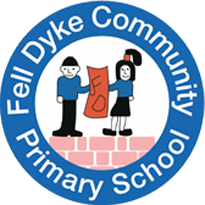Design & Technology
Our Aim
Following the 2014 National Curriculum, Design and Technology should help children learn how to take risks, become resourceful, innovative, enterprising, and capable citizens. Through the evaluation of past and present design and technology, children develop a critical understanding of its impact on daily life and the wider world. High-quality design and technology education makes an essential contribution to the creativity, culture, and well-being of the children at Fell Dyke. We aim to use creativity and imagination alongside pupils’ designs to make products that solve real and relevant problems within a variety of contexts, considering their own and others’ needs, wants, and values.
Curriculum Organisation
At Fell Dyke we have mixed age classes in both Key Stage 1 and Key Stage 2. This means that year groups curriculums alternate to ensure that all topics have been covered. We follow a ‘Design, Make, Evaluate’ approach to the teaching of Design and Technology, as outlined in the National Curriculum Programmes of Study document and the DT Association. For each unit, the children are given a clear ‘Design Brief’ which has been carefully considered to ensure the children are presented with real life examples and problems to solve. Knowledge and skills acquired earlier in the school are built upon steadily in each new year group to ensure a broad, balanced body of knowledge develops over time. The technical skills which we teach encompass the following areas: Mechanisms, Textiles, Food and Structures. The teaching of Food and Nutrition is of great importance and holds great relevance for the children in our school community – as such, this is taught in every single year group in both cycles.
Additionally, in KS2 the children will incorporate electrical components within their mechanics units. This ensures that technical skills are covered with greater depth, and that – by the end of each key stage – children will have reached the expectations of the National Curriculum.
During Design and Technology sessions, children are encouraged to be inquisitive about the way products work. Teaching staff encourage both the asking and answering of questions to deepen children’s understanding of products and product design. Children will use market research to inform their designs which are based on their unit brief and, as they move up through the school, will be encouraged to draw detailed designs and make prototypes to refine their designs before creating their final piece. The children are encouraged to evaluate throughout each process and are supported to make changes and adapt their product should a need to do so arises. Whilst making their products, staff guide the children through the technical skills they will require, modelling good practice, highlighting safety considerations with the children and ensuring technical vocabulary is used consistently and effectively.
Through the evaluation stage of our ‘Design, Make, Evaluate’ approach, children are encouraged to reflect upon their final products, considering their suitability and always referring back to the design brief.
Knowledge, Progress and Assessment
After completing our Design and Technology curriculum, we would expect the children to have acquired a broad and sufficiently deep level of knowledge of product and product design. They will be able to recall the learning that has taken place through each unit, use key vocabulary consistently and accurately and discuss how prior knowledge and skills have supported them in subsequent Key Stages.
